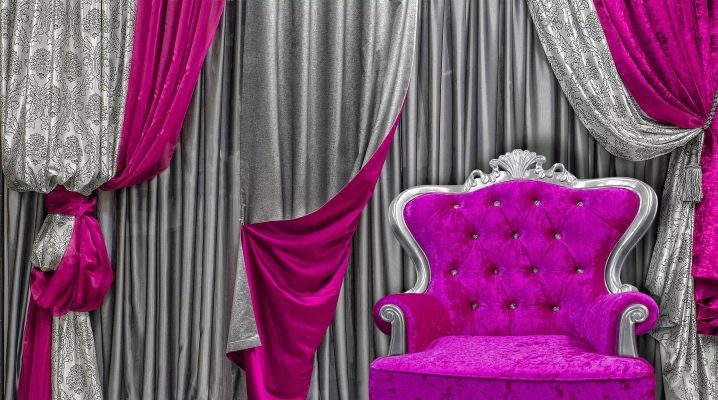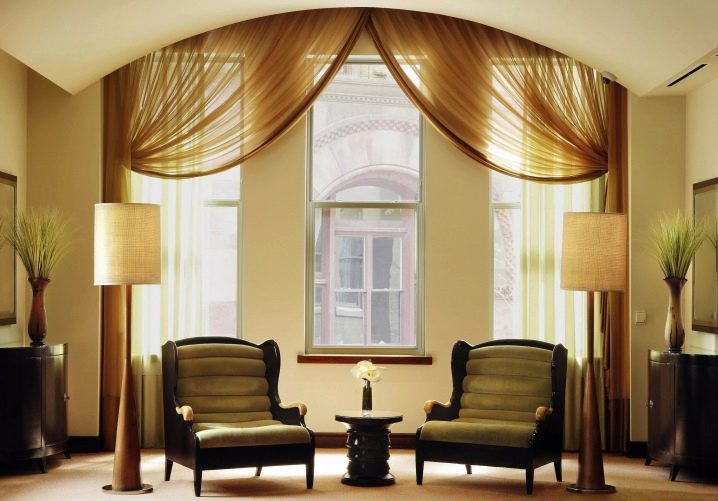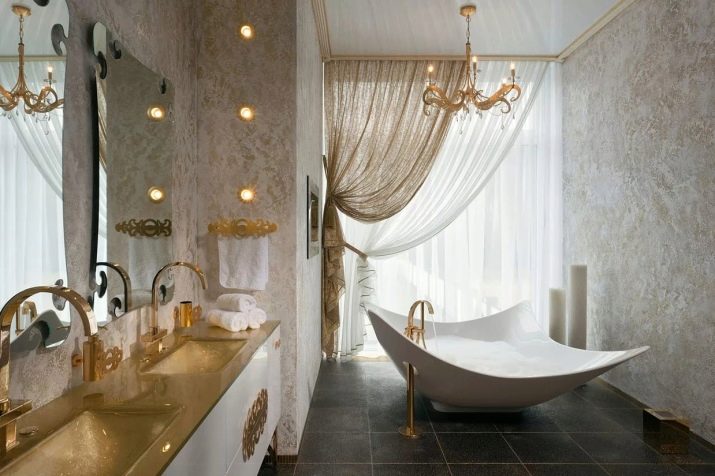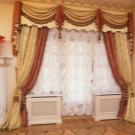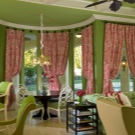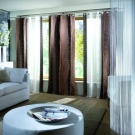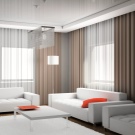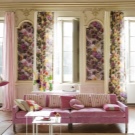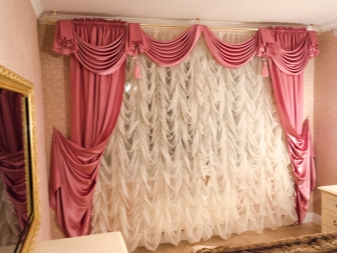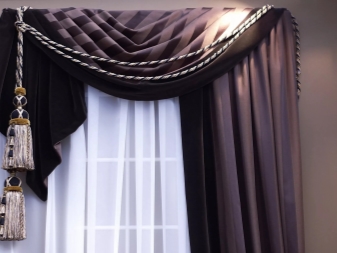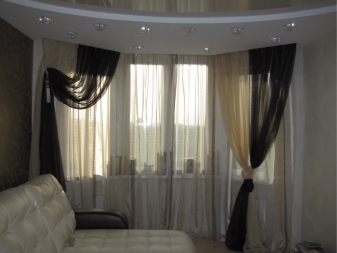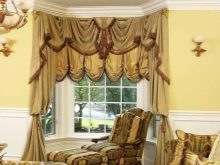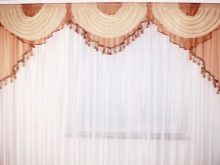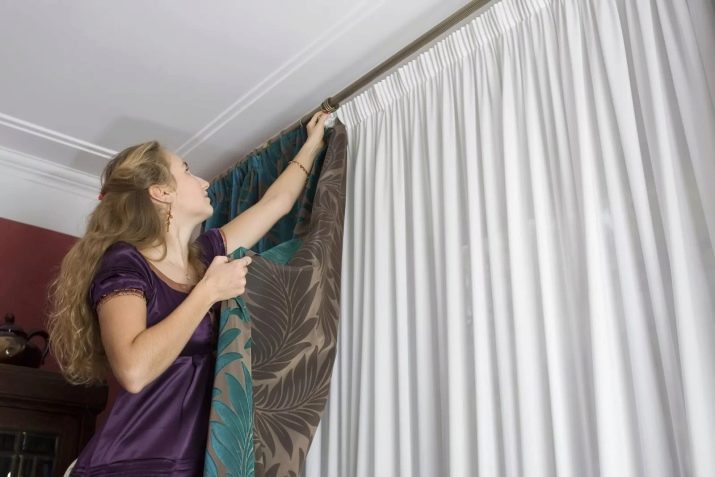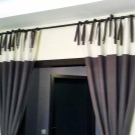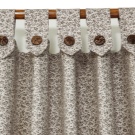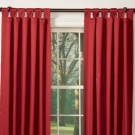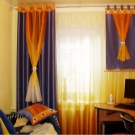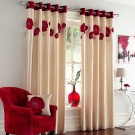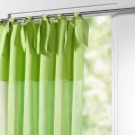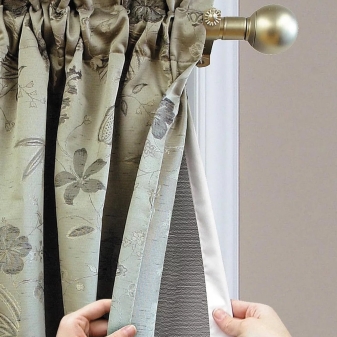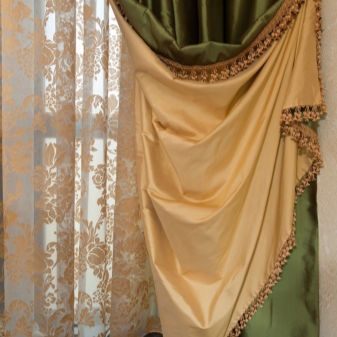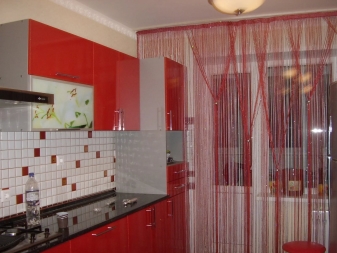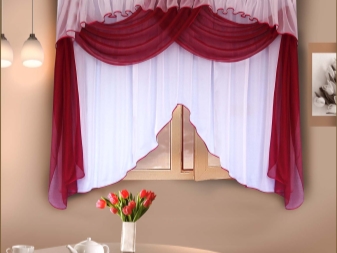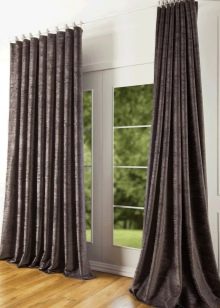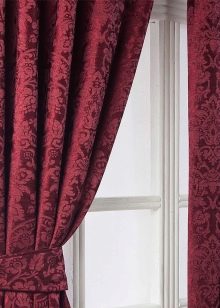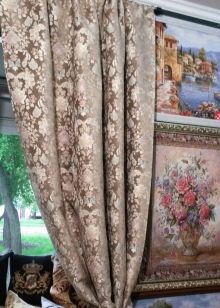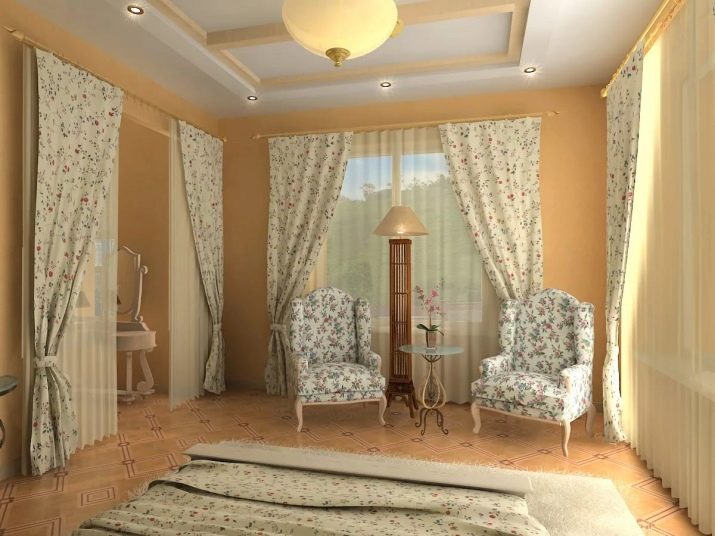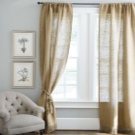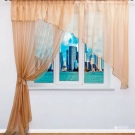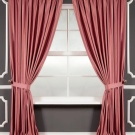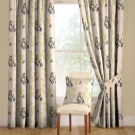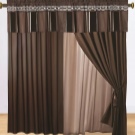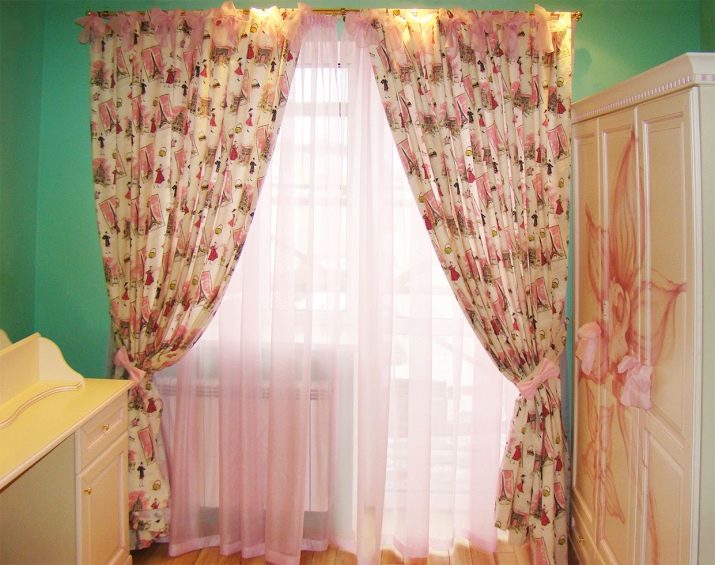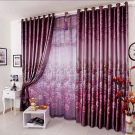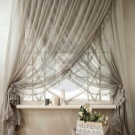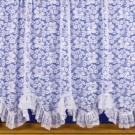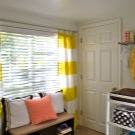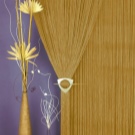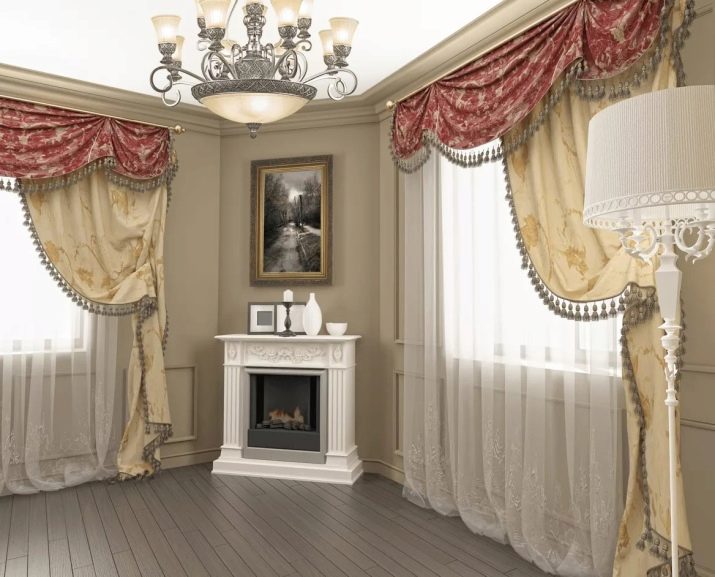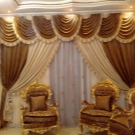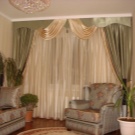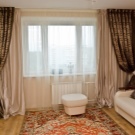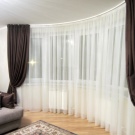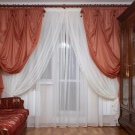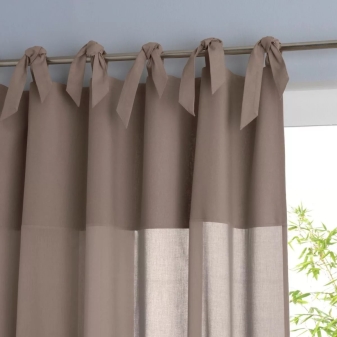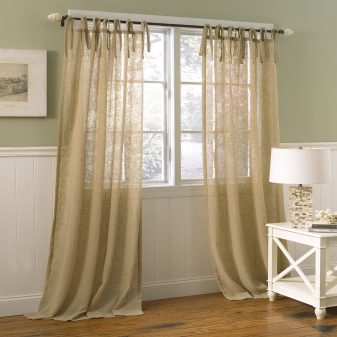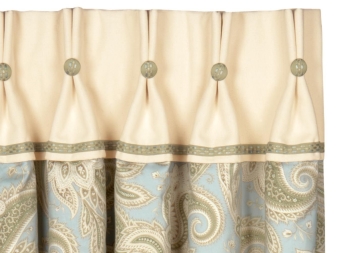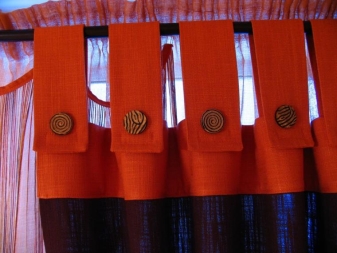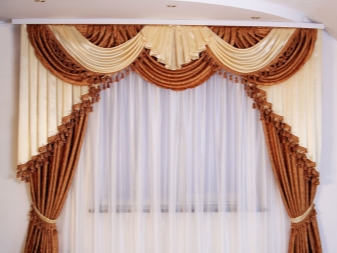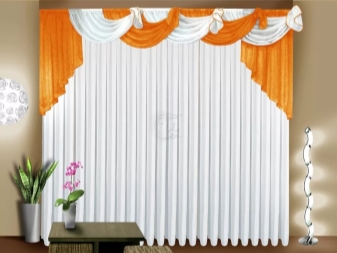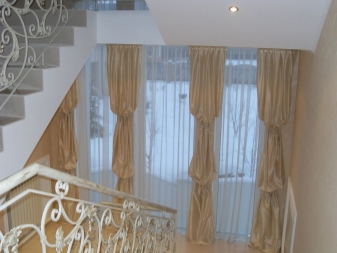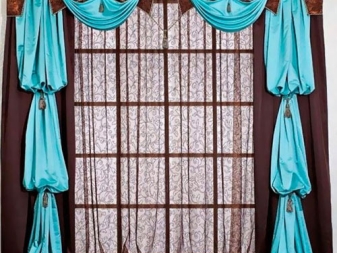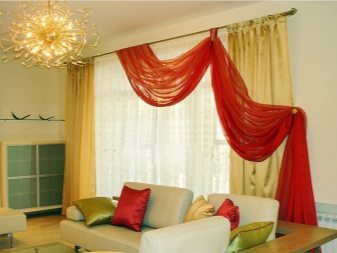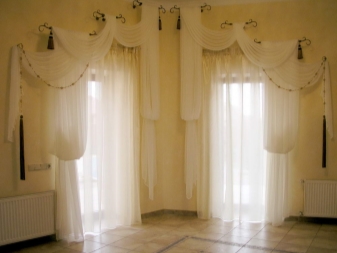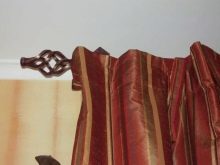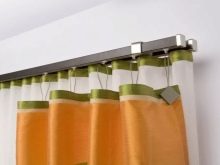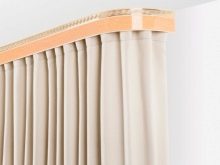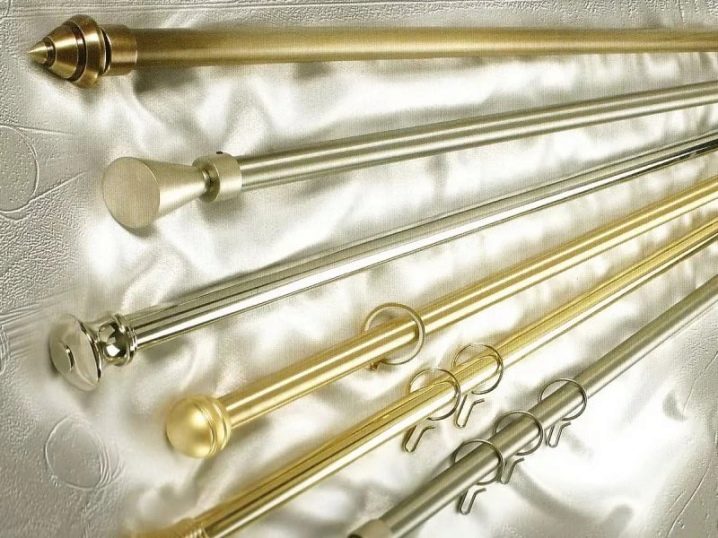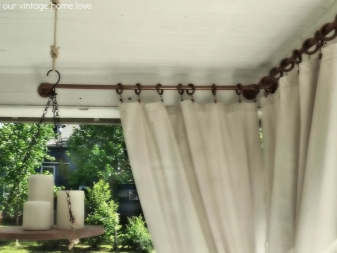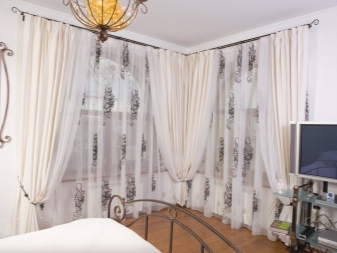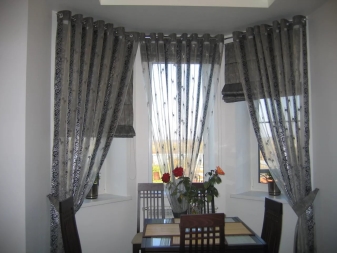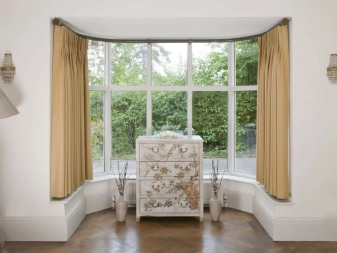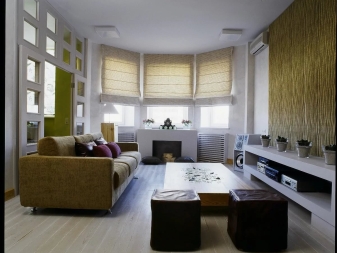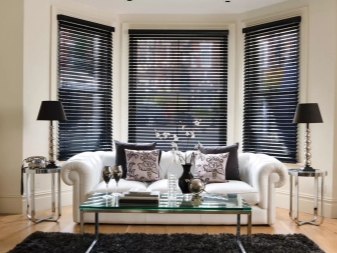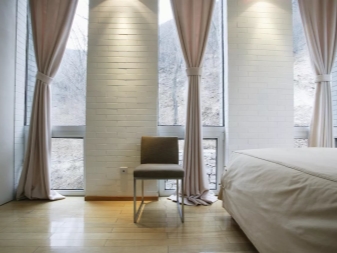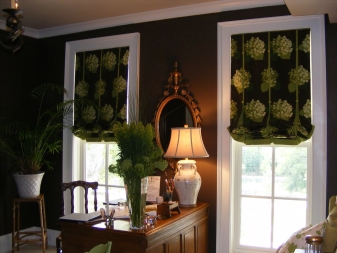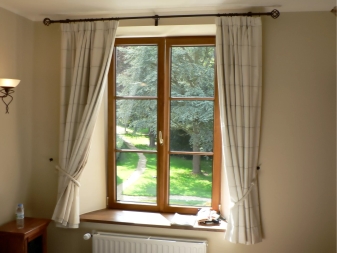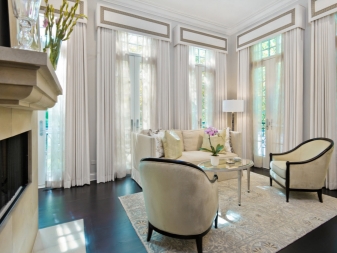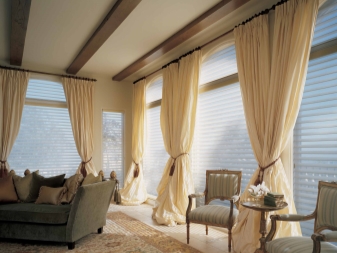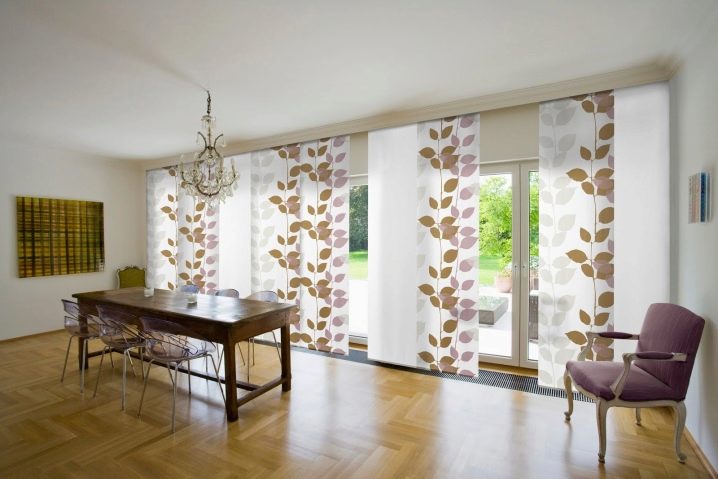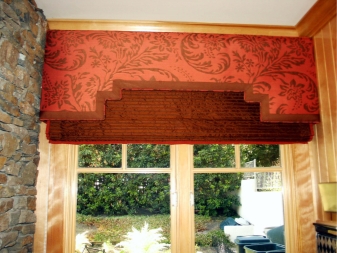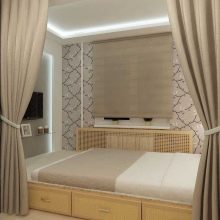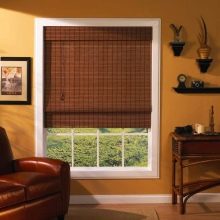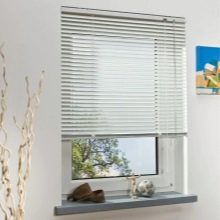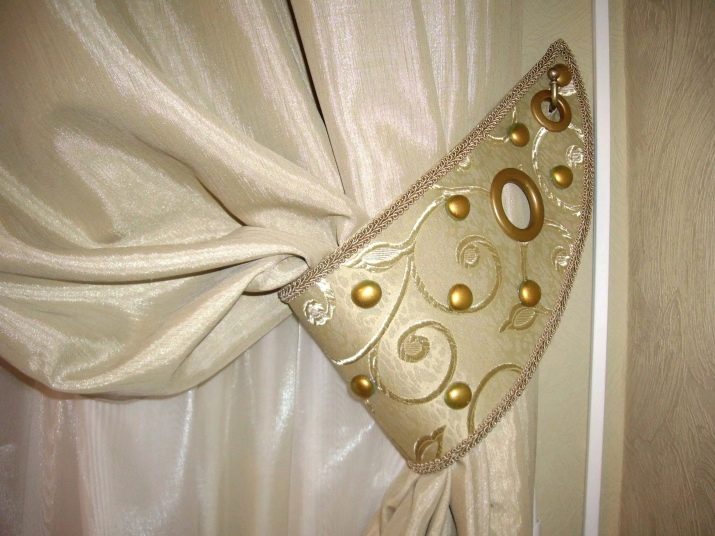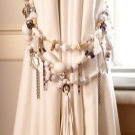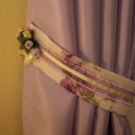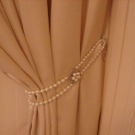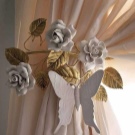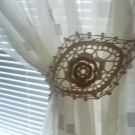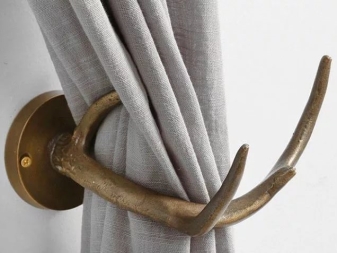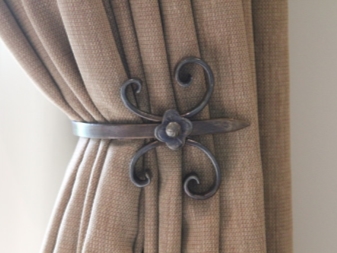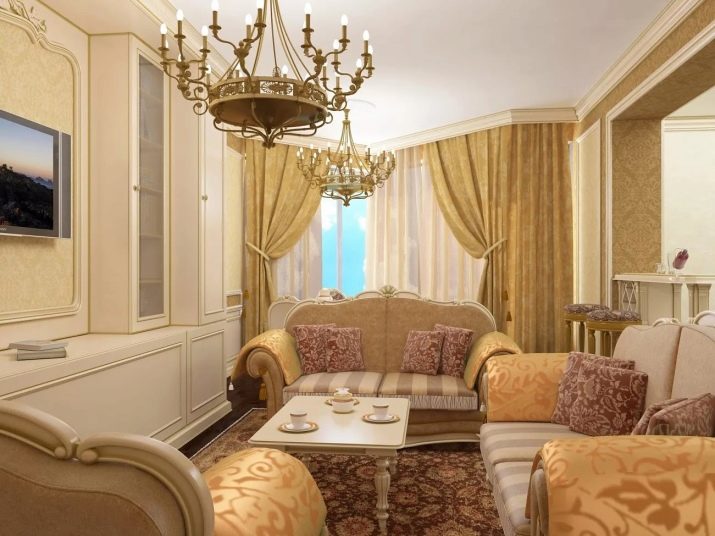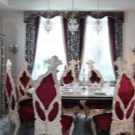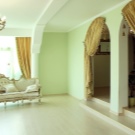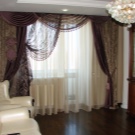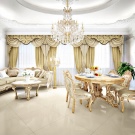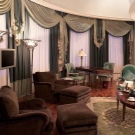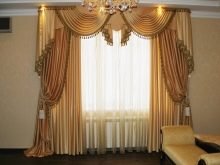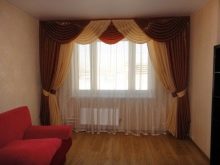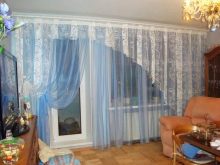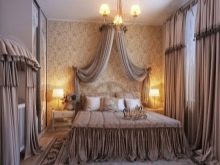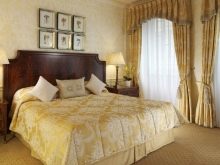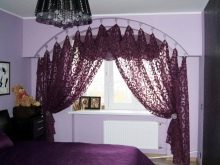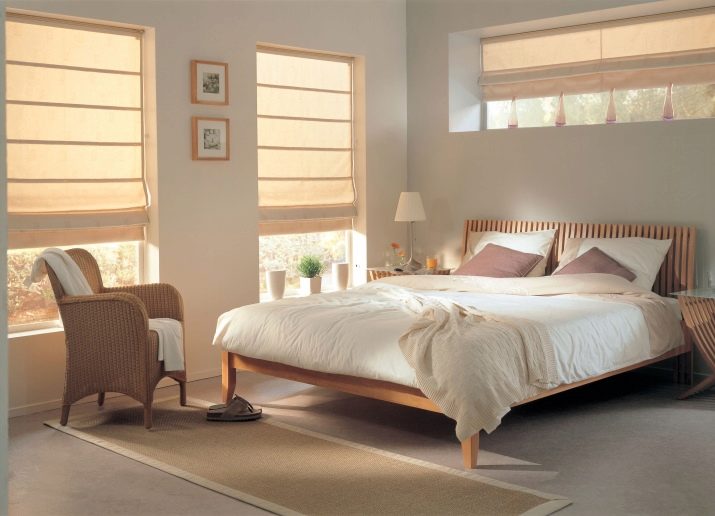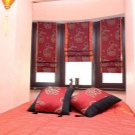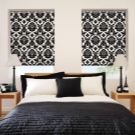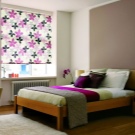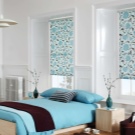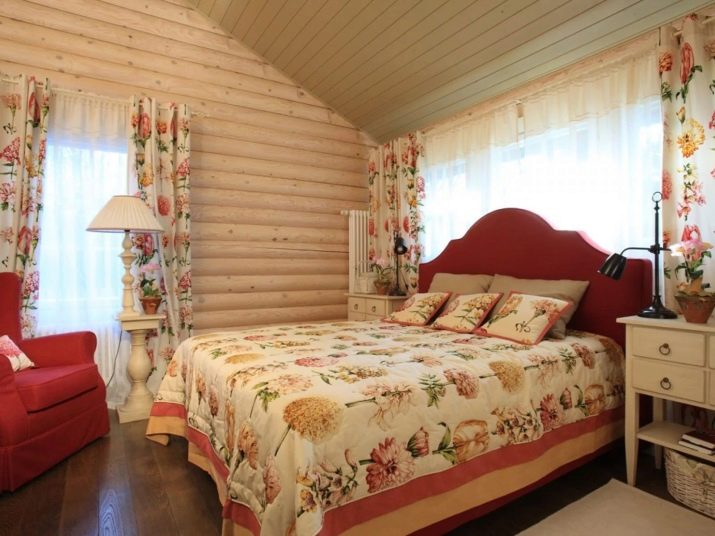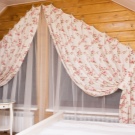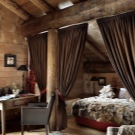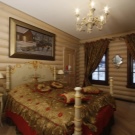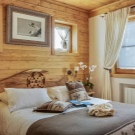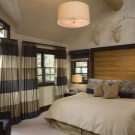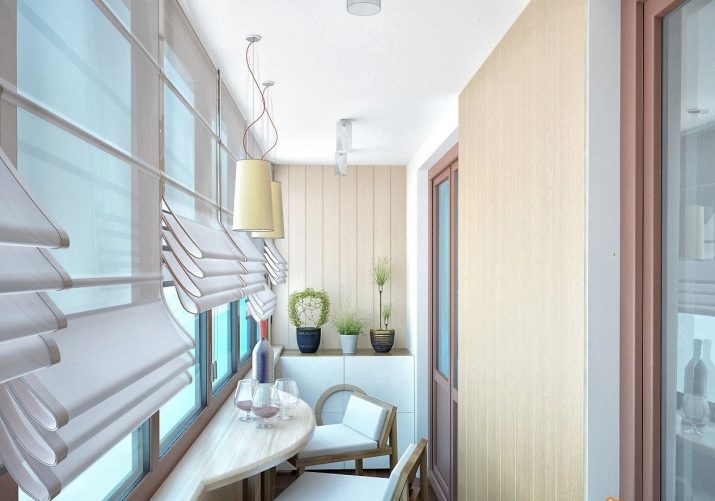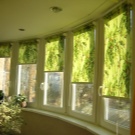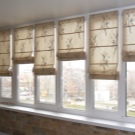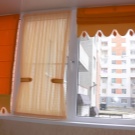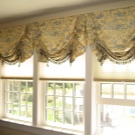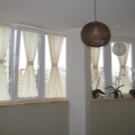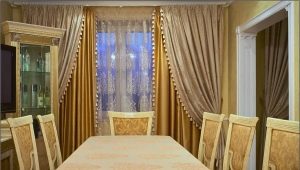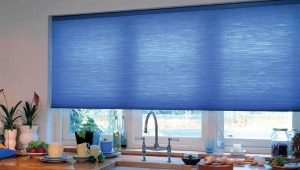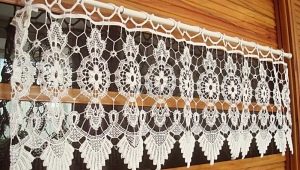How beautiful to hang curtains?
Curtains can be so familiar part of the interior that over time they just stop noticing. However, they also help to completely change the usual image of the room, in a new way emphasizing the advantages of the style solution of the room and the configuration of the windows themselves.
The main thing you need to pay attention to when choosing curtains is their convenience and organicity in a particular interior.
The design of the curtains depends not only on the personal taste, but also on the size and shape of the windows, the purpose of the curtains, the style of the room and the occupations of those who are constantly in it. Curtains protect from bright light and cold, mask an unattractive view from windows, hide your life from prying eyes if the room is located on the first floor of a house with a low socle. On the other hand, the curtains can form a charming frame for a picturesque view from the window, serve only as a decorative element.
Recent trends
Today, window decoration options are almost limitless. You can choose a suitable fabric and decorative elements that are fully consistent with the style and purpose of the room, taking into account its light, shape and size. Consider the latest trends in more detail:
- Lovers of the classics prefer symmetrical drapes using richly decorated pelmets and original pickups. Numerous folds and a combination of various types of fabric (dense materials with a rather saturated shade and airy light tulle) give the room a festive and at the same time cozy look.
- Asymmetrical curtains will help to arrange both high narrow and wide windows, adding originality and dynamism to the whole room. A long air curtain that serves as a continuation of the lambrequin and contrasts in color with the main curtain makes the room particularly expressive. Two asymmetrical draperies, which mirror each other, will serve as an excellent decoration for a bay window, which challenges the interior designer due to a certain difficulty in choosing the optimal solution for them.
- Spacious rooms allow the use of complex multilayer curtain configuration with a magnificent lambrequin and a cascade of folds. The special charm of this drapery is given by decorative elements - beads, pearl threads, twisted cords with tassels, hooks that play around the general style of the room.
- An additional touch to the overall design of curtains makes the design of the loop. Curtains can be hung using their usual options, as well as using bows, knots, eyelets, buttons, rings, sling, special weaving of fabric strips, cords, etc. , but also allow to make folds in the most unusual way.
Current fabrics
The choice of fabric for curtains is determined not only by its decorativeness, but also by such properties as practicality, density, plasticity, texture, severity, ability to diffuse light, the presence of thermal padding. If the protective functions of curtains are more important than their decorative qualities, then the ability of the fabric to serve as sound insulation should be well evaluated, protected from the scorching sun or drafts, without dimming the natural light.Often, the use of the lining not only effectively solves all the problems mentioned above, but also protects the silk fabric from quick burning.
Curtains in the kitchen or nursery often need to be washed, respectively, the fabric for them should allow frequent machine washing or have a coating that protects from stains. As a rule, delicate natural fabrics, such as chintz or silk, are not very suitable for making curtains that will hang in the kitchen or in rooms that overlook a busy road.
If the room does not suffer from excessive light or cold, an airy muslin or veil will help to create a beautiful delicate window decoration, regardless of its size.
Among the rather dense heavy fabrics that hold back too bright light, drafts and wide windows that are well suited for draping can be found velvet, brocade, tapestry, velvet. They have excellent decorative properties, but are more suitable for straight curtains with a small number of folds and require a reliable strong baguette or bar. Ease of care is not at the same time their distinguishing characteristic.
Lighter, but no less decorative fabrics - flax, moire, satin, creton, duPont, chintz. They allow you to create lush curtains with a large number of folds, easy to maintain, but do not like intense sunlight and frequent washing.
The lightest fabrics — veil, walk, lace, cambric, muslin, muslin — are ideal for creating a cascade of folds, let in natural light and allow you to experiment with the shape and combination of materials.
In general, the most successful is the combination of heavy and light fabrics, thanks to which you can realize both functions - to provide protection from the sun and cold and to decorate the room.
The traditional combination is a combination of light tulle curtains and heavy curtains. Modern designers, however, more often prefer to use a light translucent fabric over a more dense basic matter, which gives the window decoration depth and expressiveness. No less popular is the combination of two light fabrics of contrasting shades, enriching the interior with the dynamics of the movement of air and light.
Original ideas
Curtains can have a solid solemn look and testify to the work of a professional designer:
- However, no less popular improvised curtainsthat you can create with your own hands. This drapery is notable for both the refinement of the decor, and the exceptionally fresh, individual solution that beats the room.
- One of the easiest versions of curtains to perform is fabric ties. They can be used to fasten the "cafe" curtains that cover only the lower half of the window in the kitchen or light elegant curtains in the nursery. The stitches are sewn along the upper edge of the fabric and fastened with ribbons around the rod or cornice.
Contrast ties will help shade the color of the main fabric, add a color nuance to the entire drapery solution. The long ends of the ties can hang down and serve as an additional decoration for the curtains.
- A peculiar kind of fastening curtains on fabric hinges is the use of large buttons.covered with a fabric that matches the shade or, conversely, is draped in contrast with the main color.One end of the loop is sewn into the upper edge of the curtain, the other is tightly fastened with a button on the front side of the button. Buttons are used for purely decorative purposes, although it is possible to sweep slots on the loops and in fact fasten the edge of the loop to the curtain. Buttons can be used all kinds - copper, made of wood or bone, covered with fabric or leather.
- The traditional decoration of windows is lambrequin, gathered in soft folds and giving curtains completeness. In color, it can completely coincide with the curtains or contrast with them.
- Drape a wide bright window can be lush curtains with an overlap. To do this, you will need to tightly tie the fabric in several places and straighten the overlap over the ties. Lightweight fabrics give such curtains an elegant flowing look, denser ones make it possible to create interesting volumetric shapes. Silk cords, ribbons and bows are suitable for ties; you can choose the color scheme at your discretion.
Such volume curtains will not move apart, so they need to be combined with light lace or tulle curtains.
- Curtains in the living room can be decorated with garlands and a train, giving the impression of a magnificent refined decoration. Theatrical appearance of such curtains is created with the help of intersecting garlands of cuts of fabric of the same color as the vertical curtains. The finished look to the curtains in the living room gives the decor in the form of original grabs, threads with beads, twisted silk cords with tassels.
- Using curtain tape helps to create different types of folds, giving curtains volume and elegance. Folds can be radial or bow, suitable for plain curtains. More complex cylindrical folds, as well as folds in the form of elegant ruffles, puffs and waffles look great on heavy fabrics.
- An additional decorative element of window decoration is a cornice, presented today by rails, rods and rods. The choice of the cornice depends on the severity of the curtains, the way the curtains open, the number of layers. Combined metal rail allows you to hang heavy multi-layer curtains with lambrequin. Bars made of metal, wood or plastic are very decorative in and of themselves and help to fix single-layer curtains of medium density.It is worth noting that by connecting the rods with special corner connectors, they can also be used for a semicircular window or for a bay window.
- Eaves, imitating art forging and made in the form of copies, arrows, twisted rods. The rods are highly decorative and allow you to hang curtains "cafe".
A rod-shutter with a loop at one end makes it possible to decorate a dormer window or a window in a niche.
- For corner windows. Depending on the configuration of the windows, you can install a separate cornice for each window or one common cornice. Side curtains on one side of each window will create a harmonious composition, and a common lambrequin will give it completeness. Since the corner windows in modern apartment buildings, as a rule, are narrow, you should not overload them with an abundance of layers and folds. Transparent curtain of tulle and laconic decorative elements - this is what is really needed.
- For bay window. Bay window itself is a spectacular decoration of the room, and the purpose of the curtains is mainly to correctly place accents and shade the beauty of the windows.You should not overload such windows with heavy curtains or an abundance of folds. If a bay window is used as a rest area, limit yourself to tulle with or without a pattern, an elegant lambrequin, decorated with fringe, and classic curtains on the sides. In summer and winter, it makes sense to use different fabrics, when choosing based on the overall tonality and the ability of the material to transmit light. Warmer saturated colors are good for winter, for the summer you can pick up more gentle cool shades. Since the bay window has a rather complex shape, there are two possible solutions: either the cornice is installed above each window, and the curtains are placed on the basis of the general drapery idea, or a continuous flexible cornice is mounted. Special flexible cornice is also used for draping arched windows.
If the bay window is planned to be used as a working area, stylish roller blinds or strict blinds will be the best solution.
- For tall windows. Tall windows allow you to experiment with tying up curtains and creating garlands. If width allows, classic stacked curtains will look very impressive on such windows.
- For narrow window opening. Visually expand the space will help simple curtains with a geometric pattern, as well as easily rising Roman blinds.
- For panoramic windows. Classic multi-layer curtains - a win-win for wide window openings. There are infinitely many options for their execution. When choosing the right option for you, make a start from the general style and purpose of the room, trying to harmoniously combine colors and use suitable decorative elements. For the living room fit curtains in the French, Italian or Austrian style.
The original option for wide panoramic windows are Japanese screen curtains. They fit well into the interior, created on the basis of the principle of minimalism, and provide incomparable convenience and room for imagination.
- For a small window. A small window, especially in a niche, is difficult to drape so as not to darken the room during the day. The ideal solution would be to use a special eaves-shutter, which is easily set aside. The eaves can be single or double, fixed in the center of the window or on its sides.Curtains at the same time have a length of up to the window sill and are equipped with a drawstring. Fabric for the eaves-shutter need light, without excess pomp of folds.
If there is no need to create a dense draft curtain, light curtains made of tulle, complemented by a beautiful lambrequin, will be a good option.
- Other options for small windows are roller blindsthat are easy to manufacture, economical and functional. If necessary, they can be combined with simple vertical curtains. Visually "raise" the ceiling in small rooms will help curtains to the floor, decorated with vertical stripes.
How to tie up?
There are numerous ways to tie curtains. For this purpose, both simple and woven straps of fabric, cords, metal or wooden holders are suitable. Velvet roses, a bow, whole bouquets and garlands are used to decorate the fabric strings. Curtains can be fixed with an original knot or special hooks with magnets. The choice of a particular method depends on the taste of the owners and the design features of the curtains.
The rules for tying curtains are few and based on common sense. The chosen method should not interfere with pushing and pushing the curtains, overstretching and crushing the material, breaking the symmetry. It is enough just to grab the curtains on the sides with holders or hook them with hooks. Curtains up to the window sill do not always need to be tied up, but if such a need arose, use magnetic holders. They are functional, do not injure the fabric and are highly decorative.
Wooden and metal holders are not only beautiful, but also very comfortable. They do not allow the fabric to slip off; to fasten the curtains, they must be carefully assembled and wound aside or draped around the holder. Holders can be independently made or decorated in the desired style.
Light translucent curtain, you can simply tie a knot, trying not to over-tighten it.
Examples in the interior
We present the best solutions of designers and their descriptions:
- Curtains in the living room can be both strict classical, and executed in Baroque style. Typically, for the living room is used a combination of thick curtains and translucent tulle or other lightweight fabric. Completeness of the composition gives a decorative lambrequin.
- Asymmetrical drapes and cascades allow you to create an individual design that emphasizes the shape of the windows. Particularly expressive look combined curtains in the French style, decorated with skillfully selected accessories (holders, tassels).
- For the hall in a regular apartment, you can choose classic curtains, animated by a falling garland of translucent fabric of a contrasting shade. If the apartment has low ceilings, then you should focus on the vertical lines.
- In the bedroom Curtains can be more gentle warm shade than in the living room. Here you need a combination of thick fabric that will absorb the light of lanterns at night and the rays of the sun in the early morning. These curtains have to push and push, so in the bedroom you need to install comfortable holders for curtains. A good choice would be magnetic pickups. In the daytime, light elegant tulle will adorn the window.
- If the window in the bedroom is facing south, Roman blinds may also be required, which can be easily lowered and raised in summer. Such curtains will be a reasonable choice for the nursery, if the child’s daytime sleep is still necessary.
- In a small room It is undesirable to use too large curtains, which will “eat up” the wall space with a window. It is worth thinking about the possibility of installing roller blinds, which do not drown out the natural light and create a light airy atmosphere in the room. The graceful lambrequin from translucent fabric of gentle color will visually expand space.
- In a wooden house Curtains with an ethnic ornament or in the style of Country will create a cozy atmosphere and protect the room from excessive heat or drafts. The appropriate addition to these curtains will be a wooden lambrequin or a semi-antique rod.
The combination of translucent white material and thicker fabric in a bright cage or with a floral print will be very appropriate in a country wooden house. Themed magnetic clips will add comfort to a nursery or kitchen.
- If a room with a balcony comes out on the sunny side and the owners suffer greatly from the heat in the summer, it may be necessary to hang curtains on the loggia. To do this, it is advisable to use roller blinds, which are easy to lift on a cloudy day or in winter so that natural light in the room remains sufficient.Another option is to install a ceiling eaves along the entire length of the loggia and placing translucent tulle on it. In order to create the impression of completeness, it is possible to hang on the sides not too thick curtains of decorative material that is protected from burning out.
Well-chosen curtains allow not only to solve the main tasks of protecting the room from bright light and draft, but also to give the rooms a feeling of comfort and elegance.
When choosing a material, it is necessary to focus on the decorative properties of the fabric, and on its texture and practicality - beautiful expensive curtains will not want to change for a long time.
On many other ways to decorate curtains, see the following video.
